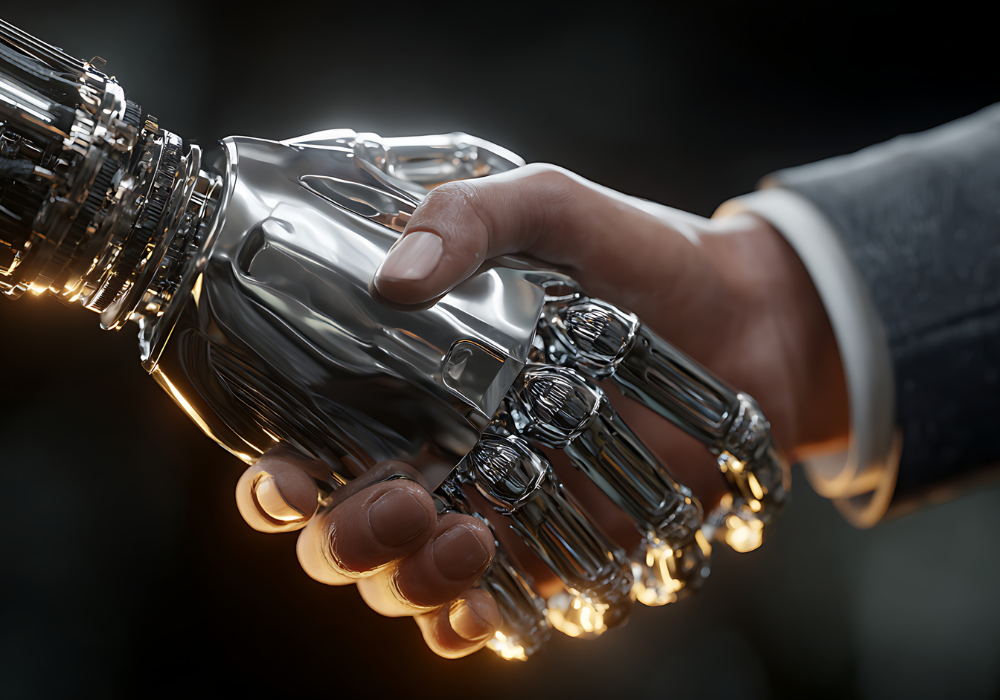Table of contents
- The Saturation Point: When AI Feels Too Artificial
- Brands Leading the Anti-AI Movement
- Why Authenticity Is the New Differentiator
- The Rise of ‘Human-First’ Branding
- The Role of AI Fatigue
- How Businesses Can Leverage Anti-AI Marketing
- Challenges of Going Anti-AI
- The Future: Human + AI, Not Human vs AI
- Wrapping Up: The Return of the Human Touch
- Related Articles
For years, brands raced to adopt artificial intelligence in marketing—automated ad targeting, AI copywriting, chatbots, and algorithmic content creation. But in 2025, a new countertrend is taking hold: anti-AI marketing.
As consumers become increasingly aware of how much of their online experience is automated, a growing number of brands are pushing back against AI’s dominance and reclaiming a “human-first” approach to storytelling. From handcrafted ad campaigns to manually written captions, businesses are finding that authenticity is the new currency of attention.

The Saturation Point: When AI Feels Too Artificial
The first wave of AI marketing promised efficiency and personalization. Tools like ChatGPT, Jasper, and Meta’s Advantage+ campaigns made it easy for businesses to generate content in seconds.
But what began as innovation soon led to oversaturation.
Consumers now scroll through endless AI-generated captions, robotic ad copy, and synthetic influencer videos. The result? Ad fatigue and declining trust.
A recent HubSpot report shows that 62% of consumers can now identify AI-generated ads—and they’re less likely to engage with them. As one marketing executive put it:
“People crave real stories from real humans, not polished output from a prompt.”
Brands Leading the Anti-AI Movement
Several major brands are now embracing anti-AI marketing as both a creative philosophy and a positioning statement.
- Dove launched its Real Beauty campaign 2.0, explicitly stating it does not use AI-altered images in ads.
- Patagonia doubled down on human-led storytelling, using real employees and customers in every campaign.
- Ben & Jerry’s introduced a “No Bots. No Filters.” campaign that celebrates raw, human expression on social media.
These brands are sending a clear message: human creativity can’t be automated.
Why Authenticity Is the New Differentiator
AI tools have made marketing faster—but also more predictable. The same tone, phrasing, and image style now flood every feed. As a result, brands that invest in genuine storytelling and emotional connection stand out more than ever.
Human creativity taps into emotion, nuance, and imperfection—qualities AI still struggles to replicate. According to a Forbes article on brand authenticity, 88% of consumers say authenticity determines which brands they support.
That’s why businesses are shifting from “AI efficiency” to “emotional effectiveness.”
The Rise of ‘Human-First’ Branding
“Human-first branding” means building marketing systems around empathy, experience, and emotion rather than automation.
Examples of this shift include:
- Manually crafted brand voice: Companies are rewriting AI-generated text to sound more personal and less corporate.
- Behind-the-scenes storytelling: Brands showcase their teams, processes, and even flaws to appear more relatable.
- Community-driven campaigns: Instead of algorithmic audience segmentation, brands are engaging directly with followers and niche groups.
This approach reinforces that connection beats convenience.
The Role of AI Fatigue
AI fatigue describes the growing resistance to machine-made content. As generative AI floods every digital space, people are developing an instinct to filter out what feels “too polished.”
Brands that intentionally go against this tide—showing rough edges, human handwriting, and real emotion—are earning loyalty.
Even major creators are jumping on board: YouTubers and TikTokers are now labeling videos as “100% human-made.”
How Businesses Can Leverage Anti-AI Marketing
If you’re a small business or entrepreneur, you don’t need a big budget to embrace this movement. Here’s how to start:
- Be Transparent: If your marketing is AI-free, say so. “No AI Used” can be a trust badge in 2025.
- Show the People Behind the Brand: Feature your team, creative process, and community involvement.
- Use AI Strategically, Not Blindly: AI can assist with research or editing—but your brand voice should remain human.
- Collaborate With Human Creators: Partner with micro-influencers or creatives known for authentic storytelling.
For inspiration, see The DigiPalms blog on viral content—a great example of combining creativity with human relatability.

Challenges of Going Anti-AI
While the trend is growing, it’s not without challenges. Manual marketing takes more time, resources, and creativity.
Brands must balance authentic storytelling with business efficiency. For example, completely avoiding automation may not be feasible for every company.
The key is selective authenticity—deciding where human input adds the most value (like storytelling) and where AI can still support behind the scenes (like analytics).
The Future: Human + AI, Not Human vs AI
Despite the “anti-AI” name, this movement isn’t about rejecting technology entirely. It’s about reclaiming the human element in an increasingly automated world.
The future of marketing will likely be hybrid—AI for data and optimization, humans for story and emotion.
Brands that master this balance will dominate the next decade.
As the Shopify Future of Commerce report highlights, “authenticity, empathy, and purpose will define the next evolution of marketing.”
Wrapping Up: The Return of the Human Touch
Anti-AI marketing isn’t nostalgia—it’s strategy. As audiences grow weary of synthetic engagement, brands that emphasize real people, real voices, and real creativity will win.
AI may help brands scale, but human stories are what make them unforgettable.
In a world flooded with automation, the most disruptive thing a brand can do… is be human.

